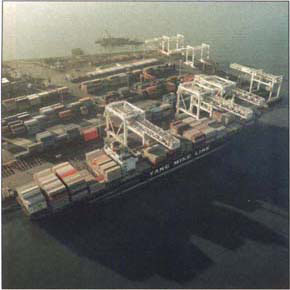All Issues
After decline, farm exports to gain ground
Publication Information
California Agriculture 53(5):6-6.
Published September 01, 1999
PDF | Citation | Permissions
Full text
Farm exports in the United States have dropped for 3 years, due in part to the Asian crisis, which began in July 1997. Now, new forecasts from the U.S. Department of Agriculture suggest the trend may have bottomed out. Better prospects in fiscal 2000 (Oct. 1, 1999, through Sept. 30, 2000) are based on anticipated global economic growth, especially in Asia, and reduced foreign production of some bulk commodities, such as wheat and soybeans.
The Asian crisis weakened global demand for agricultural products, partly by lowering incomes in affected countries. Other events also depressed prices, including large production of grains and oilseeds worldwide. Although the countries most affected by the crisis were in East Asia, ripple effects spread to Russia, South America and the oil-exporting countries of the Middle East. (For effects on California, see page 7 .)
U.S. farm exports declined steadily after reaching a high for the year ending Sept. 30, 1996. USDA reports they dropped from $59.8 billion in fiscal 1996, to $57.3 billion in 1997, $53.6 billion in 1998 and a projected $49 billion in 1999. That represents a cumulative decline of 18% over 3 years. However, the recent forecast, based on financial recoveries now under way in East Asia and elsewhere, predicts an upward trend beginning next year, with a $50 billion farm export value, which will continue to grow in the future.
Freight is loaded onto a Taiwanese container ship at the Port of Oakland. About 70% of the port's business is with Asia, primarily Japan, China, Taiwan, Hong Kong and Korea.
The reasons for trade optimism include the fact that Japan's economy appears to be growing again after a long period of stagnation. The U.S. economy remains robust, with Gross Domestic Product (GDP) growing almost 4% for the third year in a row, and the projected GDP up 2.5% in the year 2000.
“There is a growing awareness that the locus of global instability has moved from variations in trade to movements of capital,” reports the USDA's August Outlook for U.S. Agricultural Trade. “The precipitating factor for the global financial crisis was the rapid shift of capital flows away from the Asian Tiger economies from highly positive in 1996 (plus $250 billion) to significantly negative in 1997 and 1998 (minus $50 billion). In 2000, net capital inflows likely will return to the Asian Tigers.”
For the U.S. economy (but not for agriculture), the impacts of the global financial crisis have been more positive than negative, the publication stated. Depressed world demand and efforts of the crisis-affected countries to generate more export revenues have driven world prices of raw materials and manufactured goods down. This has reduced U.S. costs and allowed the economy to grow rapidly with little or no inflation.
These same factors have made it more difficult to export U.S. agricultural commodities and products. For 1999, the U.S. current account deficit could exceed $300 billion, the largest on record. (The current account includes the balance of trade in goods and services as well as profits, interest, dividends and unilateral transfers.) Large current account deficits should continue into 2000, although at a slightly reduced level of around $250 billion.
Another factor that is likely to affect U.S. farm trade in the future is the outcome of the ninth round of international trade talks, which will be launched at the World Trade Organization (WTO) Ministerial Conference in Seattle this December. While agriculture had been included in each of the previous rounds, it was not until the Uruguay Round of Multilateral Trade Negotiations (ending in 1994) that real progress was made to negotiate overall reductions in barriers to agricultural trade.
Negotiations beginning in December will be aimed at opening agricultural markets, eliminating export subsidies and adopting related reforms. Among the most important goals is further reducing agricultural tariffs, which are, on average, still much higher than those on manufactured items. – Janet White (Sections of this report were compiled from the Outlook for Agricultural Trade of Aug. 31, 1999.)





